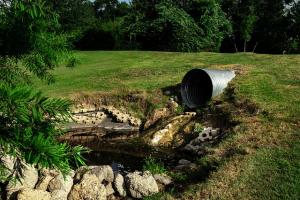Reactors of Waste Water Treatment
Units are the vessels or basin that holds wastewater for the treatment by chemical or biological processes. They can be of any shape. Depending upon the flow and operating conditions and the methods of mixing of the wastewater therein, the reactors have the following main types;
Continuous-Flow Stirred Tank Reactor (CFSTR) or Completely-Mix Reactor:
The reactants entering the reactor (which are dispersed immediately) and the products flowing out from the reactor are considered as continuous.
Completely Mix Batch Reactor:
in a closed system where no flow is added or allowed to leave during the design detention time
Plug Flow Reactor or Tubular-Flow:
Fluid particles pass through the tank and are discharge in the same sequence in which they enter.
Arbitrary Flow Reactor:
is any degree of partial mixing between plug-flow and complete-mix.
Fluidized Bed Reactor:
is filled with the packing material that expands and gets fluidized when wastewater moves upward in the reactor.
Packed Bed Reactor:
Are filled with inert packing media for the growth of biomass






